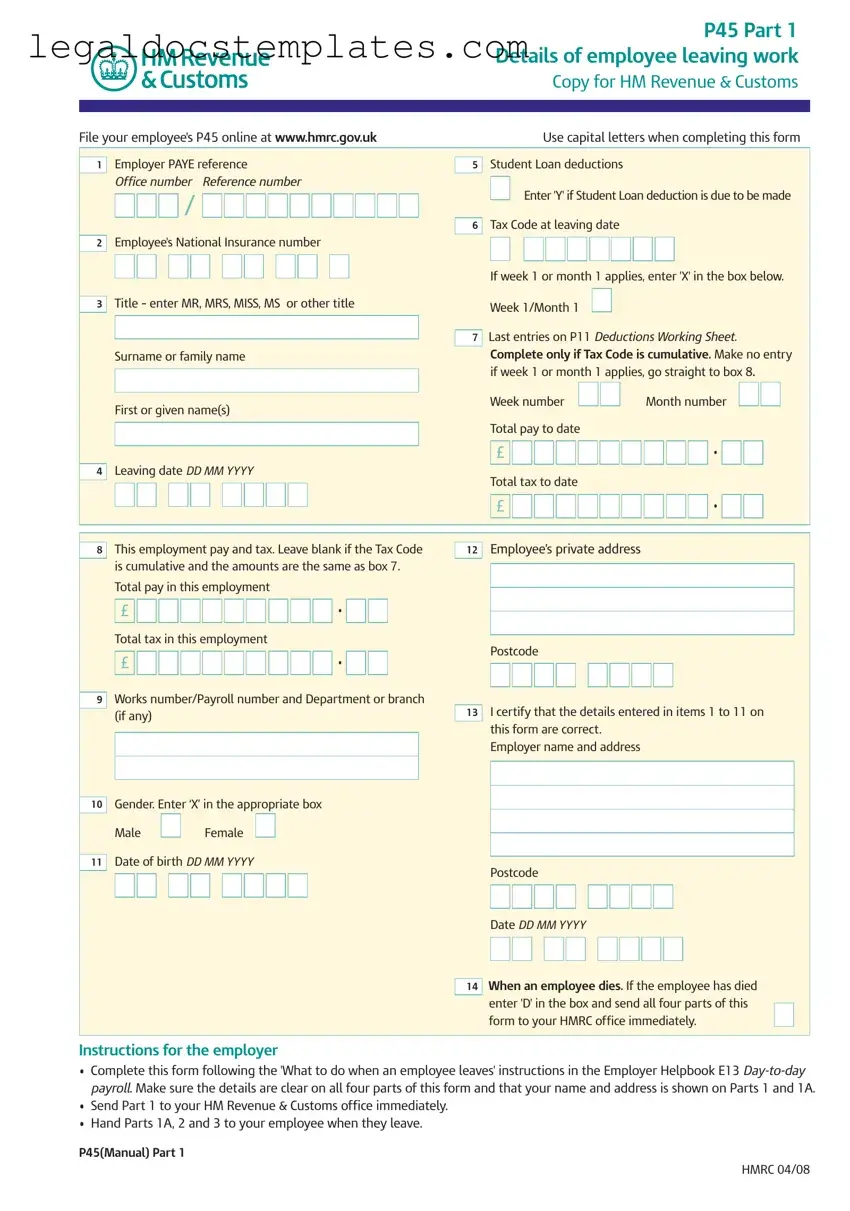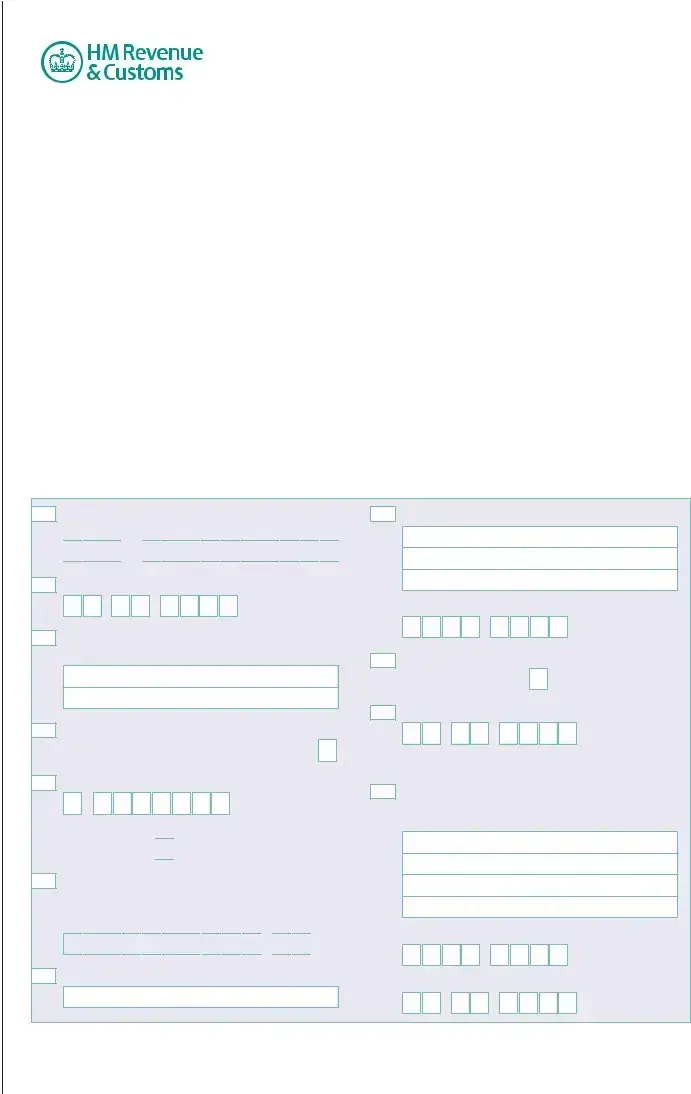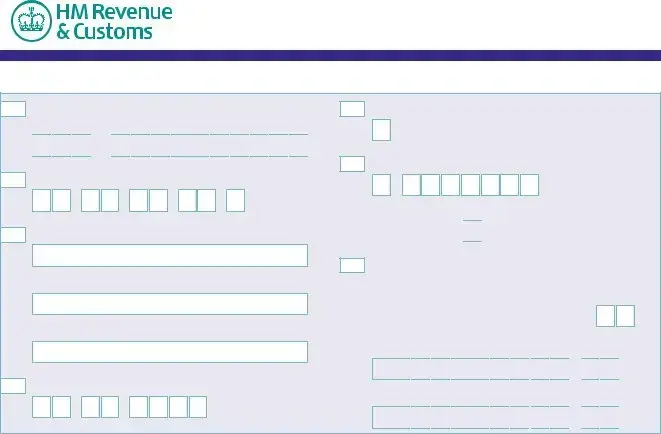The W-2 form, widely recognized in the United States, shares similarities with the P45 in several aspects. Both documents serve as crucial tax records for individuals, the W-2 summarizing an employee's annual wages and tax withholdings and the P45 detailing an employee's pay and taxes upon leaving a job. Each form includes employer and employee information, such as wages, tax deductions, and identification numbers. These forms are essential for ensuring accurate tax reporting and compliance, aiding employees in filing their annual tax returns and facilitating the transition between jobs by providing new employers with relevant tax details.
The Form I-9, Employment Eligibility Verification, though primarily concerned with verifying an employee's eligibility to work in the United States, intersects with the P45 in the context of employment transitions. While the P45 documents tax-related information at the end of employment, the I-9 is completed at the start of employment, collecting personal and identification information to confirm work authorization. Both forms are integral to employment processes, ensuring legal employment practices and the accurate administration of employee records.
The P60 form, akin to the P45, is a critical document in the UK's tax system, offering a year-end summary of an employee's total pay and deductions. It parallels the P45's purpose by providing a comprehensive overview of an employee's tax contributions and income over a fiscal year, although the P60 is issued to employees who remain in their job at the end of the tax year. Both documents play fundamental roles in personal tax management, allowing individuals to claim tax refunds, complete self-assessment tax returns, and furnish proof of earnings and taxes paid for various financial purposes.
The 1099-MISC form in the United States, while geared towards independent contractors and freelancers, shares foundational similarities with the P45 by detailing income and taxes over a certain period. Like the P45, which records the employment income and taxes deducted at source for individuals in conventional employment, the 1099-MISC captures the earnings from self-employment or freelance work not subject to automatic tax deductions. These forms are pivotal in transparent financial reporting and tax compliance, enabling accurate declaration of earnings to tax authorities.
The P11D form is another UK tax document related to the P45, documenting the benefits and expenses not covered through payroll provided to employees and directors. Although it focuses on benefits-in-kind rather than salary, like the P45, it is concerned with employment and taxation. It complements the P45 by offering a fuller picture of an individual's compensation package for tax purposes. Both forms are essential for accurate tax reporting, ensuring employees and employers meet their tax obligations regarding income and benefits provided.









 /
/ 







































 •
• 





















 •
• 









 /
/ 







































 •
• 


